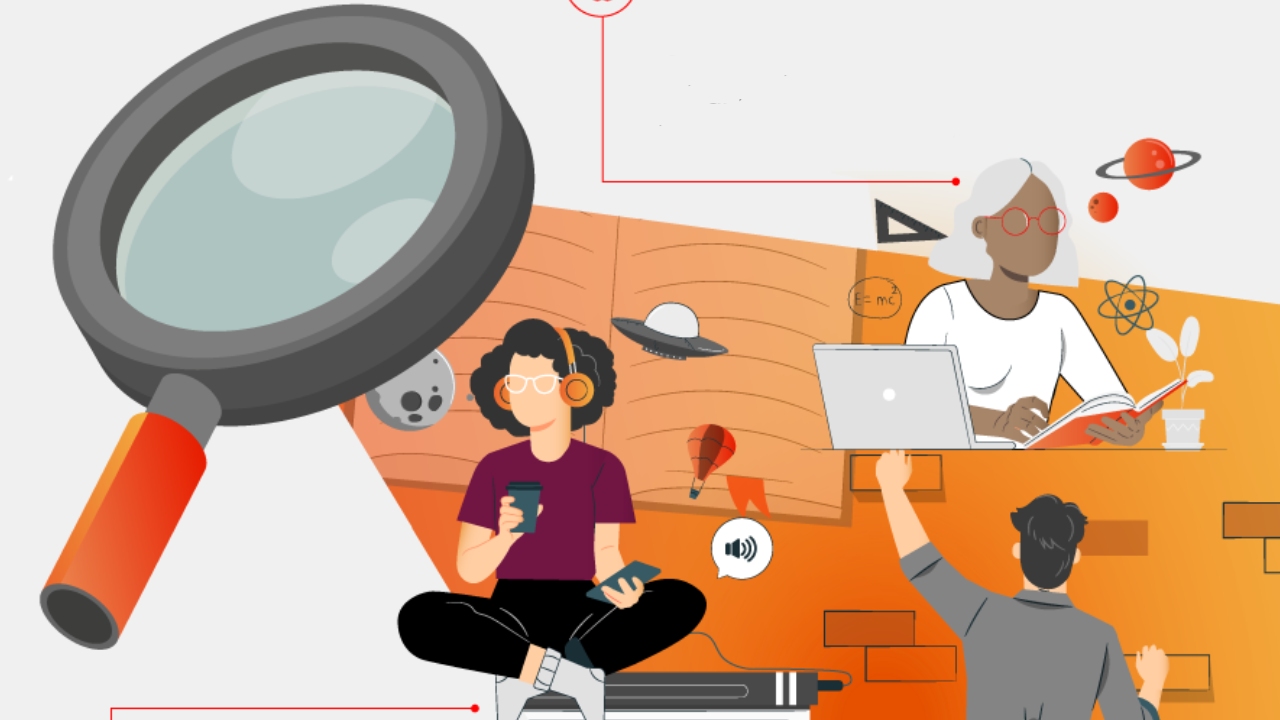Curiosity has been the fuel of knowledge since time immemorial. It’s the stimulus that has led human beings to ask questions and push boundaries in order to find answers. Today we’ll discuss the types of curiosity and how they work. What characterises curious people? What drives these inquiring minds? Cultivating this quality can be beneficial for personal and professional development as well as for organisations.
What will I read about in this article?
Curiosity may have killed the cat, but beyond that little accident, curiosity is one of the driving forces of life. It is the indispensable ingredient for development, innovation and progress. A concept that goes beyond gossiping about the social networks of former high school classmates.
Curiosity allows us to explore new ideas and experiences. Think about it, it was precisely thanks to curiosity that our ancestors discovered fire or the wheel, and who else but a curious person would dare to try a delicacy like honey for the first time? You have to be eager to discover and try new things to stick your hand in a bee’s honeycomb.
Curious people tend to be open-minded and willing to take risks to reap the rewards of new experiences. They’re motivated to explore, innovate, improve and grow. This is what drives curious people to go beyond established or known limits.
They’re also minds attracted to solving problems, seeking solutions and expanding their knowledge. They want to know the world around them, the people in it or how life works as it does.
It may seem obvious, but curious people also have the ability to enhance teamwork. Their open-mindedness makes them attracted to what’s new or different and helps to build more diverse teams and foster a more inclusive organisational culture.
And who else but a curious person would dare to try a delicacy like honey? You have to be eager to discover and try new things to stick your hand in a beehive.
Depending on the type of curiosity we have, we’ll be better prepared to resolve some conflicts or others. A team of researchers from George Mason University in the United States proposes five dimensions of curiosity:
- Joyful exploration: is the tendency to explore new ideas and concepts for the sheer pleasure and joy of it. People who demonstrate this dimension tend to be open-minded and willing to take risks to reap the rewards of new experiences.
- Sensitivity to shortcomings: this dimension has a different emotional component, more than joy, anxiety appears when trying to manage complex or abstract ideas, solve problems or reduce gaps in knowledge. In this case, you get into the tension of finding out how to solve a problem in an exam or remembering a piece of information that you can’t quite recall, for example.
- Stress tolerance is an important character trait related to curiosity. People who are able to tolerate and cope with stress are more likely to take risks, push boundaries and explore new ideas without fear of failure.
- Social curiosity: is based on an individual’s need to form meaningful connections with others. It’s the inclination to be interested in others, especially those who are different from oneself. This dimension helps people build relationships, acquire knowledge and understand different cultures, beliefs, values and perspectives.
- Thrill-seeking: this is the tendency to seek out activities that make us feel that we’re getting the most out of life. These people are often willing to take risks and push boundaries in order to experience thrills. The curiosity linked to thrill seeking is less about learning or growth and more about experience and the belief that you only live once.
Developing curiosity has many benefits for both individuals and organisations. At the individual level, it helps people explore new ideas and experiences, build relationships and develop skills. Curiosity can also help people to be more creative and better problem solvers.
For organisations, boosting curiosity can lead to product or service innovation, increased productivity and improved teamwork. It improves communication and collaboration among team members by encouraging open questions and discussions.
Driving curiosity can lead to product or service innovation, increased productivity and improved teamwork.
It also promotes continuous learning and the personal and professional development of employees. In this sense, it contributes to a more motivating and committed environment as employees feel they have room to take risks. It allows for greater adaptability to change as it encourages the exploration of new ideas and approaches.
In conclusion, cultivating curiosity is an essential ingredient for development, innovation and progress. It helps people explore new ideas and experiences, build relationships and develop skills. Let’s continue to nurture our inner curiosity so that it leads us down exciting paths.
